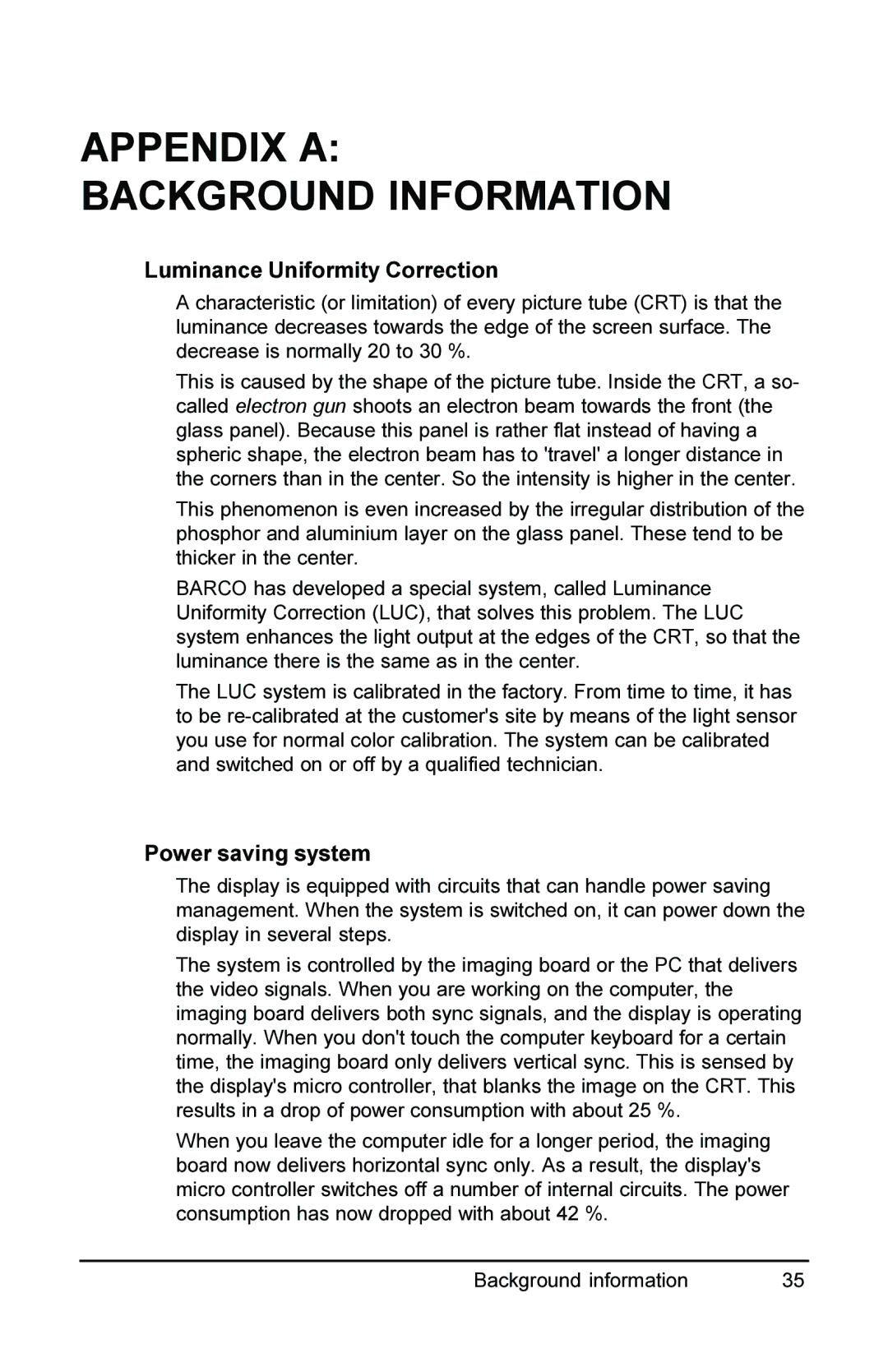APPENDIX A:
BACKGROUND INFORMATION
Luminance Uniformity Correction
A characteristic (or limitation) of every picture tube (CRT) is that the luminance decreases towards the edge of the screen surface. The decrease is normally 20 to 30 %.
This is caused by the shape of the picture tube. Inside the CRT, a so- called electron gun shoots an electron beam towards the front (the glass panel). Because this panel is rather flat instead of having a spheric shape, the electron beam has to 'travel' a longer distance in the corners than in the center. So the intensity is higher in the center.
This phenomenon is even increased by the irregular distribution of the phosphor and aluminium layer on the glass panel. These tend to be thicker in the center.
BARCO has developed a special system, called Luminance Uniformity Correction (LUC), that solves this problem. The LUC system enhances the light output at the edges of the CRT, so that the luminance there is the same as in the center.
The LUC system is calibrated in the factory. From time to time, it has to be
Power saving system
The display is equipped with circuits that can handle power saving management. When the system is switched on, it can power down the display in several steps.
The system is controlled by the imaging board or the PC that delivers the video signals. When you are working on the computer, the imaging board delivers both sync signals, and the display is operating normally. When you don't touch the computer keyboard for a certain time, the imaging board only delivers vertical sync. This is sensed by the display's micro controller, that blanks the image on the CRT. This results in a drop of power consumption with about 25 %.
When you leave the computer idle for a longer period, the imaging board now delivers horizontal sync only. As a result, the display's micro controller switches off a number of internal circuits. The power consumption has now dropped with about 42 %.
Background information | 35 |
